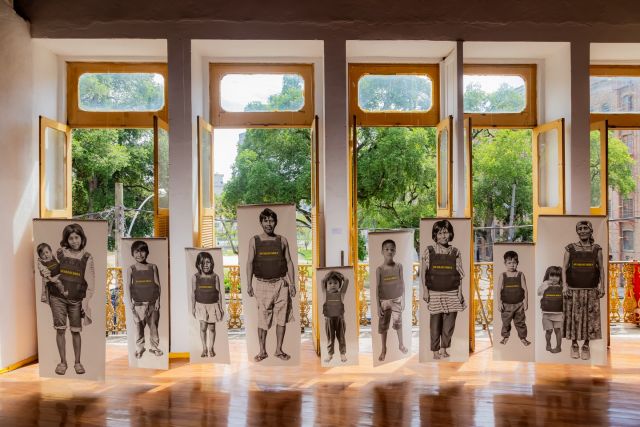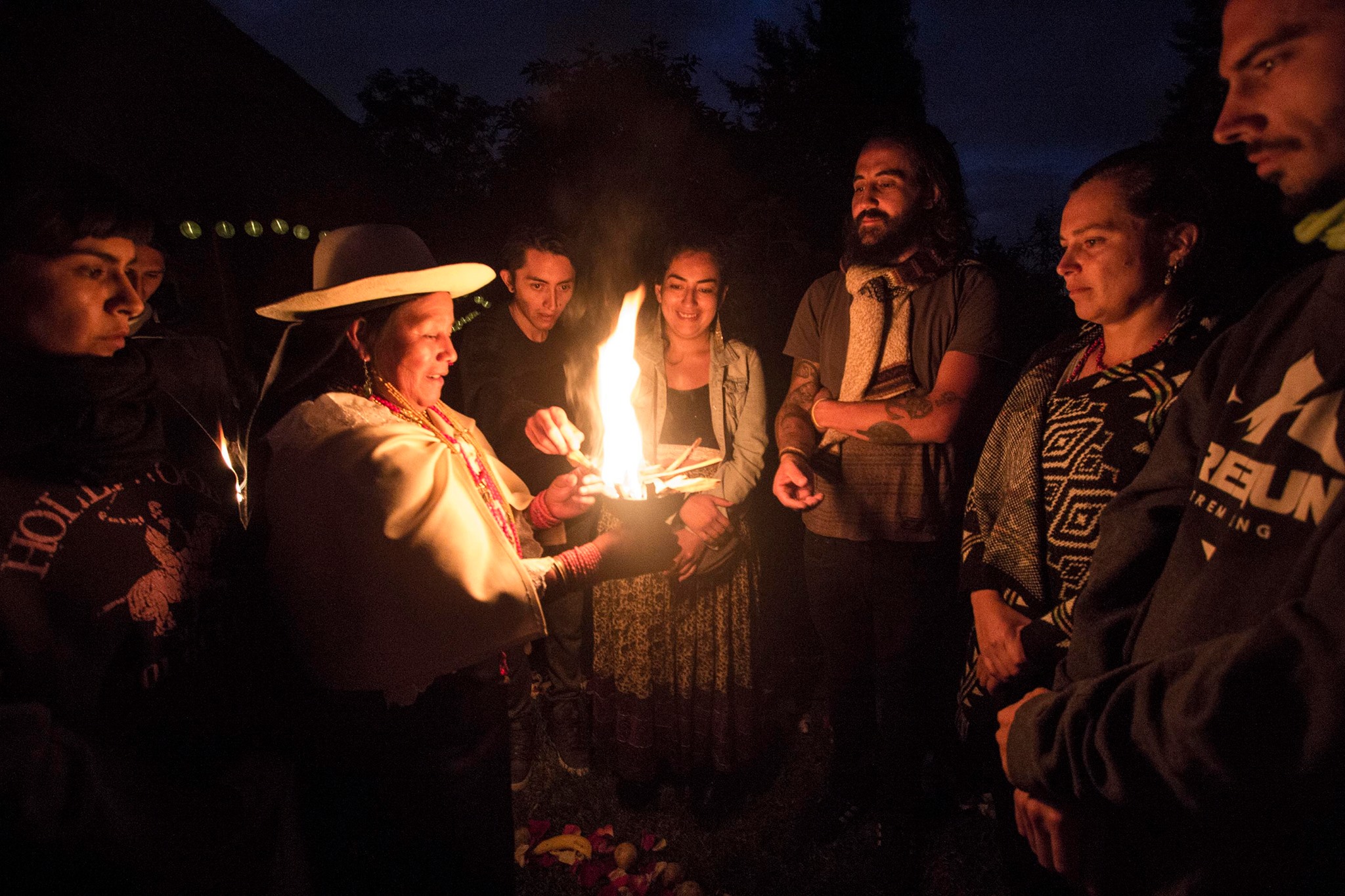The Arts as Revealers of the Socio-Environmental Past
11/21/2022
Is it in fact possible to recreate past realities, belonging to a distant past? [...] The works of Argentine artist Lucila Gradín and Brazilian artist Guga Ferraz reveal those geographies lived and hidden under the layer of the present. [...] reproducing spaces that are both imagined and real at the same time.
Walking through the streets of the city has been a trivial task for many people. In the digital era, perceiving the environment and trying to unveil it has long ceased to be a habit for those who walk. With faces absorbed in cell phones, other networks of connections have replaced looking at the outside world. With that, our own bodily experience of places has changed, in such a way that the material space we inhabit has shrunk and practically been reduced to the screen.
However, the world remains, our bodies live it, the story unfolds. So how do we re-perceive the environment and our bodies in it, how do we reactivate our senses, so that the interaction between humans and non-humans in our existences is enhanced? The awareness that we humans are not the only agents of environmental transformation is a step that opens the perception for other forms of life simultaneously in action.
The discussions generated around the concept of 'Anthropocene,' from the point of view of Environmental History, have shown that the world we know is the result of the interactions between the biotic and abiotic universe in the historical process.1 In other words, human action would not cause transformations in isolation, but from a profound exchange with the environment. In this sense, the landscapes we see are a set of elements under tension and in activity; they are like palimpsests of experiences that remain in development in the spatial, temporal and affective dimensions.
There are different ways of perceiving the environment and of unveiling what lies hidden. Currently, interdisciplinary studies are proving to be quite effective in terms of a locality's historical knowledge. Certain artistic works committed to reach beyond the walls of museums and galleries have engaged in a dialogue with different landscapes, in order to arouse the collective way of inhabiting and feeling the world. As discussed by Michael Marder, in “Elemental Forces. On Art as the Intensification of Lifelessness,” art is able to potentiate that which is "imperceptibly at work" in the ruins of a still existing world. Through art, we are able to reorient ourselves to realities composed of multiple tensions, experiences, histories, and actors. Is art thus able to contribute to a liberation from the dominant knowledge, so that existence is also understood through imagination and the diversity of interpretations about living?
Getting to Know Art through History and Viceversa
When walking, it is possible to feel the past circulating through the streets of the big cities or through the sown fields. Everything in the anthropized landscapes is indicative of collective and individual experiences, of transformations and exchanges between beings, whether positive or destructive. These processes are often silenced in time, but remain latent in the material culture, in the geography, in the vegetation, in short, in the environment, as part of the local memory. The works of Argentine Lucila Gradín (Bariloche, 1981) and Brazilian artist Guga Ferraz (Rio de Janeiro, 1974) reveal those geographies lived and hidden under the layer of the present. Their works, each in their own way, recreate spatialities from the historical-environmental rescue of the site, reproducing spaces that are both imagined and real at the same time.
But what would be “reality” in historical reconstruction? Is it in fact possible to recreate past realities, belonging to a distant past? The question in this essay is not to doubt History's authenticity, but to add to it the imaginary character proper to our collective consciousness of existences, which art is capable of interpreting. From this point of view, art teaches us to activate our imagination, to interconnect with what we simply understand as “reality.” Through this process, artistic works reach a condition of open work, since the reconstruction of the spaces they propose to rebuild is also dependent on the understanding and imagination of the public, then in full activity. Thus, we will recognize how Lucila's and Guga's artworks teach about local environmental histories by instigating the gaze on the recreated places.
Lucila Gradín: Vegetation, Colors and Worlds (Buenos Aires, Argentina)
"I assume color as an expansive bomb of health and knowledge, from its dyeing capabilities to the highest knowledge that the plant can provide us, and I use this knowledge to build a story and invent new possible worlds."2
The Argentine pampas have a long history of environmental transformation. Originally occupied by hunter-gatherer peoples, this ecoregion has undergone profound alterations since the arrival of the European colonizers. Once there were no large predators, the introduction of foreign species, such as cattle and horses, were crucial in the process of altering its ecosystems.
With the modernization of the Buenos Aires pampas from the mid-19th century onwards,3 the national economy became structured around agro-exports, leading to the expansion of agricultural production and the effective occupation of the pampas plains. This occupation implied, above all, the entry of new animal and vegetable species, new technologies (railroads), cultures and settlers from different parts of Europe. In addition, the development of industrial production throughout the 20th century led to the growth of many cities, especially the capital city of Buenos Aires. Under these changes, the pampas were profoundly redesigned, resulting in other socio-environmental landscapes.4
The task of environmental rescue of this space is not simple given that the pampas plain comprises fields, towns and cities. However, ecological restoration works have been decisive for the environmental health of the region. Also, due to this complex occupation and biophysical destruction, it is difficult to access its “original” landscapes.
As I mentioned earlier, one of the most effective ways to revisit the past is through art. Some of Lucila Gradín's paintings allow us that experience by suggesting possible worlds:
“My work has to do with a research around dye and medicinal plants. Lately I' ve put my attention and special interest in native plants, since our original ecosystem has practically disappeared, there are only very small samples of what this landscape used to be. Through the mythologies I am finding small clues to understand that cosmogony invisibilized for centuries: medicinal uses, dyeing capabilities and shamanic practices. All these uses and knowledge are hidden in the mythologies that are linked to certain plants or trees.”5
The paintings that make up the series Impenetrable (2021), offer us a journey through the grasslands of the Argentine pampas through data research and the colors produced by the artist. If nowadays is almost impossible to walk through what would be the pampas ecosystems in their state prior to the colonial occupation, the artist's paintings recreate that space through the image produced by the use of native dyeing plants on fabrics.
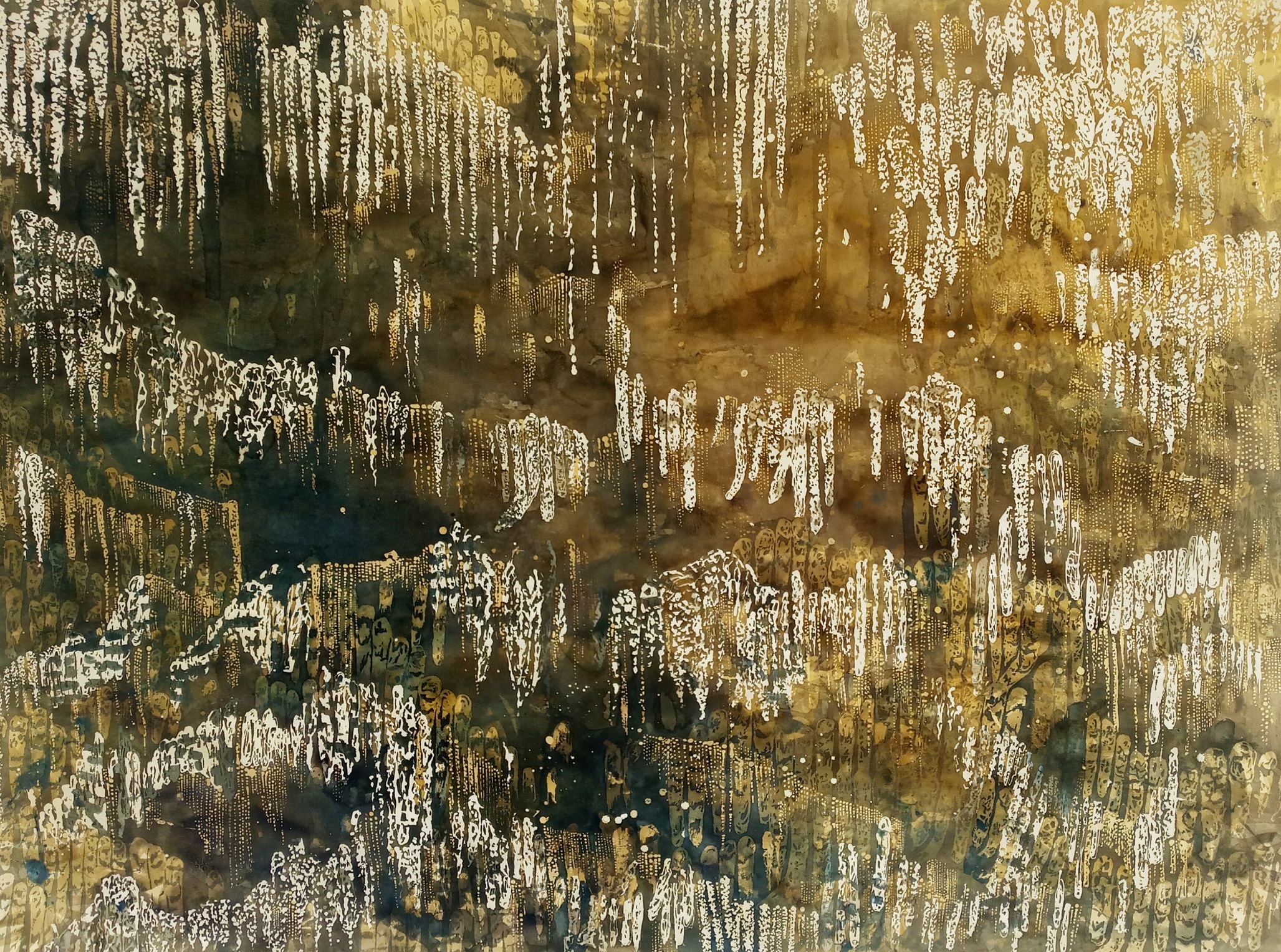

The created image activates our imagination, like a distant memory of the unlived; a memory of a primitive landscape resulting from the intertwining of vegetations, people and indecipherable languages. By activating the power of the colors of the native plants used, Lucila reveals an ancestry silenced in the layers of the earth and of history. The pampa belonging to a past then “impenetrable,” due to the almost total disappearance of its ecosystems and its original population, is reached through the encounter between the profusion of colors of its vegetation and our imagination, stimulated by the artist's work. In this encounter, we enter a kind of “cosmogonic-ecology” which rescues the pampean past in this recreated world. The somewhat tangled appearance of her paintings reveals a pampa dominated by native vegetation6 and by the nomadic peoples who roamed the vast plains still untouched by the geometries applied by Western territoriality.
Guga: Among Seas and Hills, We Are (Rio de Janeiro, Brazil)
The sidewalks, streets and avenues of large cities demarcate the urban space and impose paths for pedestrians. There, the walks are generally routes previously elaborated by urban planners and by the walkers themselves in search of their destinations. To encounter chance along these streets can become a task of intentional search. To see that which is not visible to a first and fleeting experience of the environment is an exercise in education on the act of perceiving and perceiving oneself. In this exercise, the walker initially asks themselves “Where am I?” in order to unravel the various spatio-temporal layers that make up the present.
In the series Até Onde o Mar vinha. Até Onde o Rio ia (2010) the past is revisited through artistic interventions in downtown Rio de Janeiro. By drawing a line of coarse salt on certain streets in the area, Guga stimulates the curiosity and imagination of the people who randomly pass by. In the case of the stretch of Santa Luzia Street, the unwitting pedestrian doesn't find direct answers, instead he finds questions that, at the very least, unsettle him. "The coarse salt has a meaning; a thought of how to talk about the sea, the sea came this far and went away, and what its trail left me... was dry salt..."7
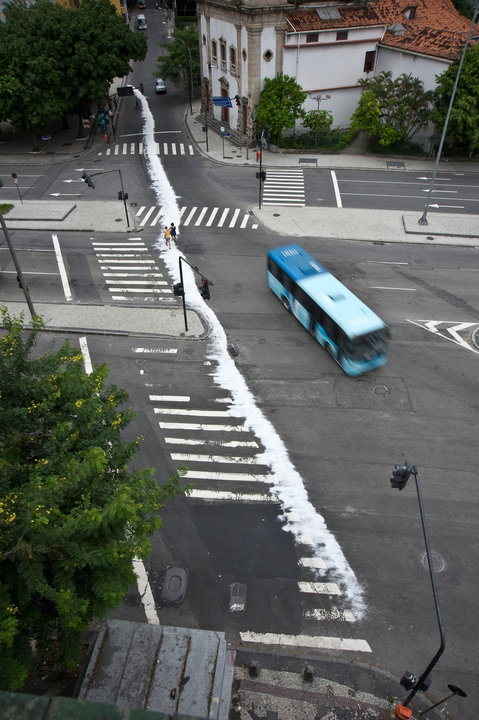
The line of coarse salt made by Guga marks the old limits of the city of Rio de Janeiro, in this case it locates up to where the sea reached the disappeared beach of Santa Luzia. In the process of urban growth, the city underwent land reclamation in its most flooded areas.8 Until the beginning of the 20th century, the beach was frequented by the carioca population. The process of its dismantling began around 1905, but it was in the 1930s that the beach disappeared as a result of the expansion of the land. Between 1902 and 1906, the then mayor Pereira Passos carried out an extensive urban reform, which involved countless demolitions, known as the bota-abaixo (“tear down”) policy.9 With the purpose of modernizing and sanitizing the city, old buildings were destroyed, extinguishing much of its colonial past and changing its original geography.
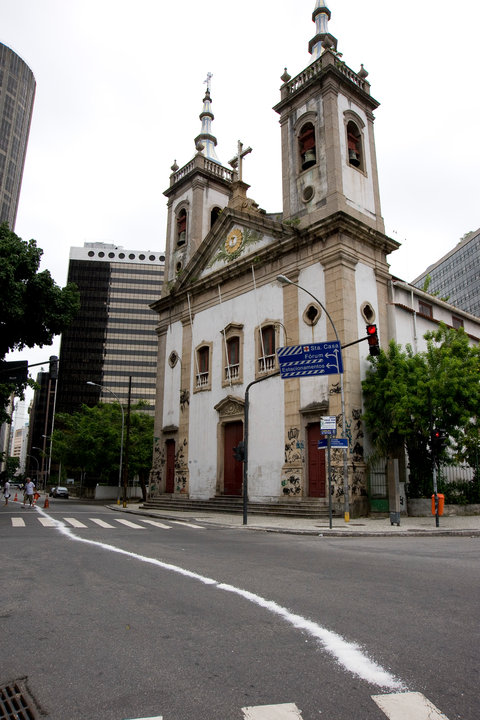
Part of this modernization process was also the clearing of Morro do Castelo, then located in the same region. In Até onde o morro ia, até onde o Rio vinha (2014), Guga gives continuity to the question of the city' s urban transformation. It was a formerly inhabited hill, which corresponded to the colonial city and was destroyed in 1922 to be replaced by a long avenue.
"(...) the Morro do Castelo was the cradle of the city, there was an incredible Portuguese colonial architecture; I had not realized that the Morro was also demolished because the carioca wanted to get rid of a colonial aspect, of a Portuguese colony; they wanted to remove that plague of Portuguese colony from there, from the Center of the city of Rio de Janeiro (...)"10
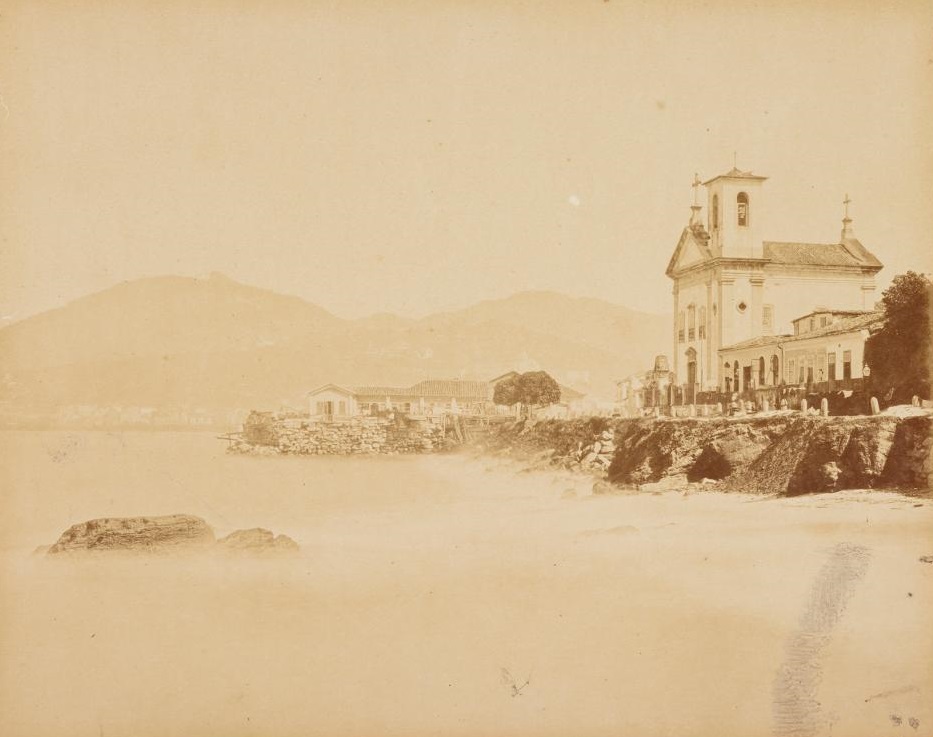
Guga "reconstructed" the Morro do Castelo by bringing earth, wood, photos, drawings, among other materials, into the gallery of the National Foundation for the Arts (FUNARTE), which today occupies what would be the slope of the disappeared morro. Through the palimpsest of temporalities then activated, the geographic layers were assembled together with the imagination of each person who visited the exhibition, so that the faded limits of the old city could be perceived.
As a Conclusion
Lucila's and Guga's works tell the story through the interpretation they trigger together with the environment. Interdisciplinary knowledge has shown other ways of knowing realities than those based on the traditional teaching system. The very multiplicity of realities, peoples, cultures and knowledge has forced the opening for structured knowledge in horizontal and diversified exchange. From there, the differences in perceptions and experiences become present in the exchange of historical and socio-environmental information.
The history of a region can be built from different sources (documentary, visual, oral, ecological), which will be interpreted by its historians. But if we think that the receiver (student, general public) of this “traced” history should not be passive but rather active and creative, the apprehension of the transferred information should be carried out simultaneously with the stimulation of their imagination. By incorporating the imagination in the educational process, new perceptions of the world emerge, so that the dominant knowledge is questioned in the face of the multiple possible knowledges to be attained. The act of learning, then, is an experience of life and reflection on oneself, as an act of identity construction in the context of socio-cultural exchange.
In this way, Lucila and Guga's works show that the world we create is an interweaving of experiences and superimposed environments. Their works point to an indefinite spatial temporality—as magical as the "nature" they recreate, as fantastic as our existence.
